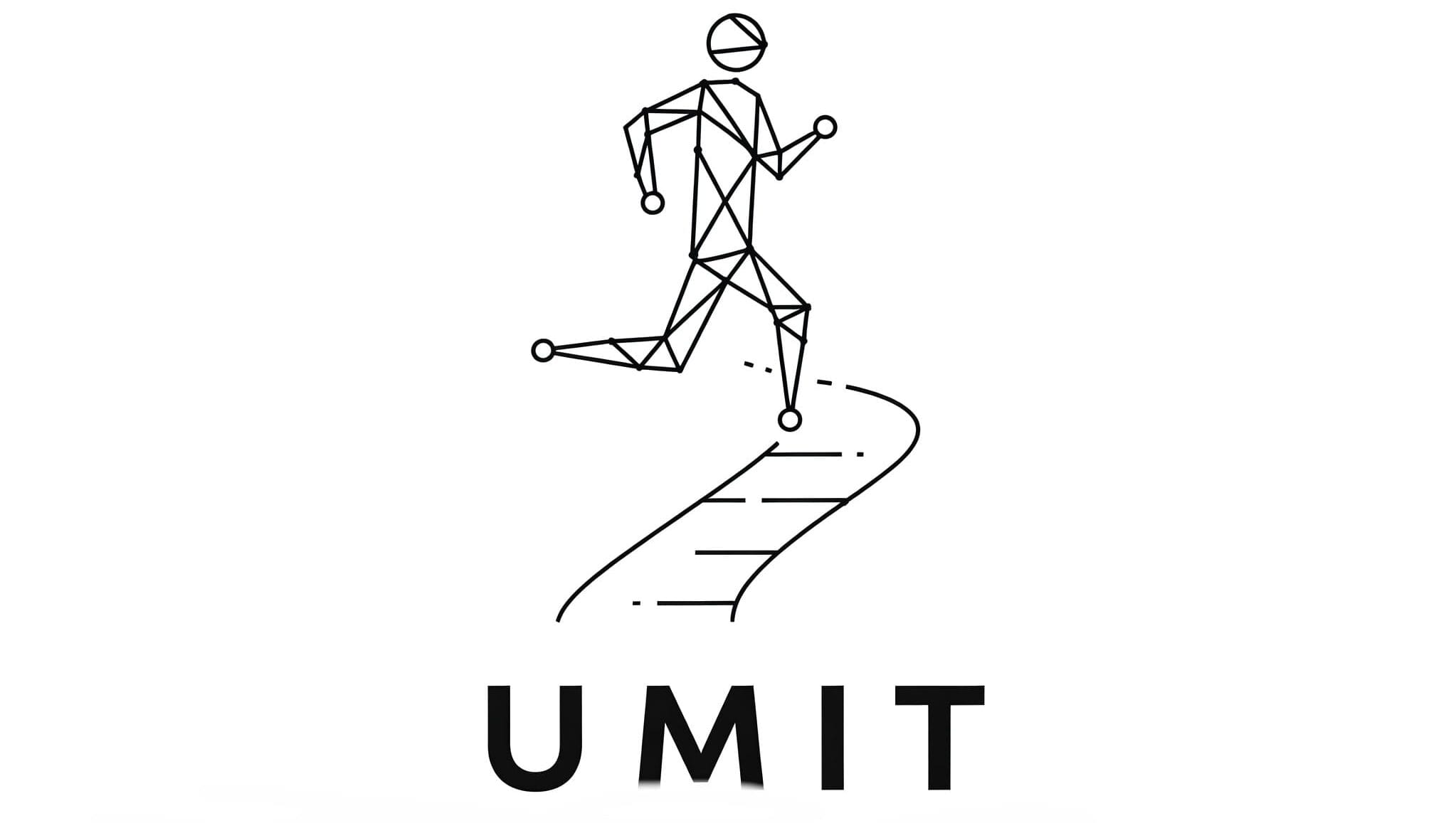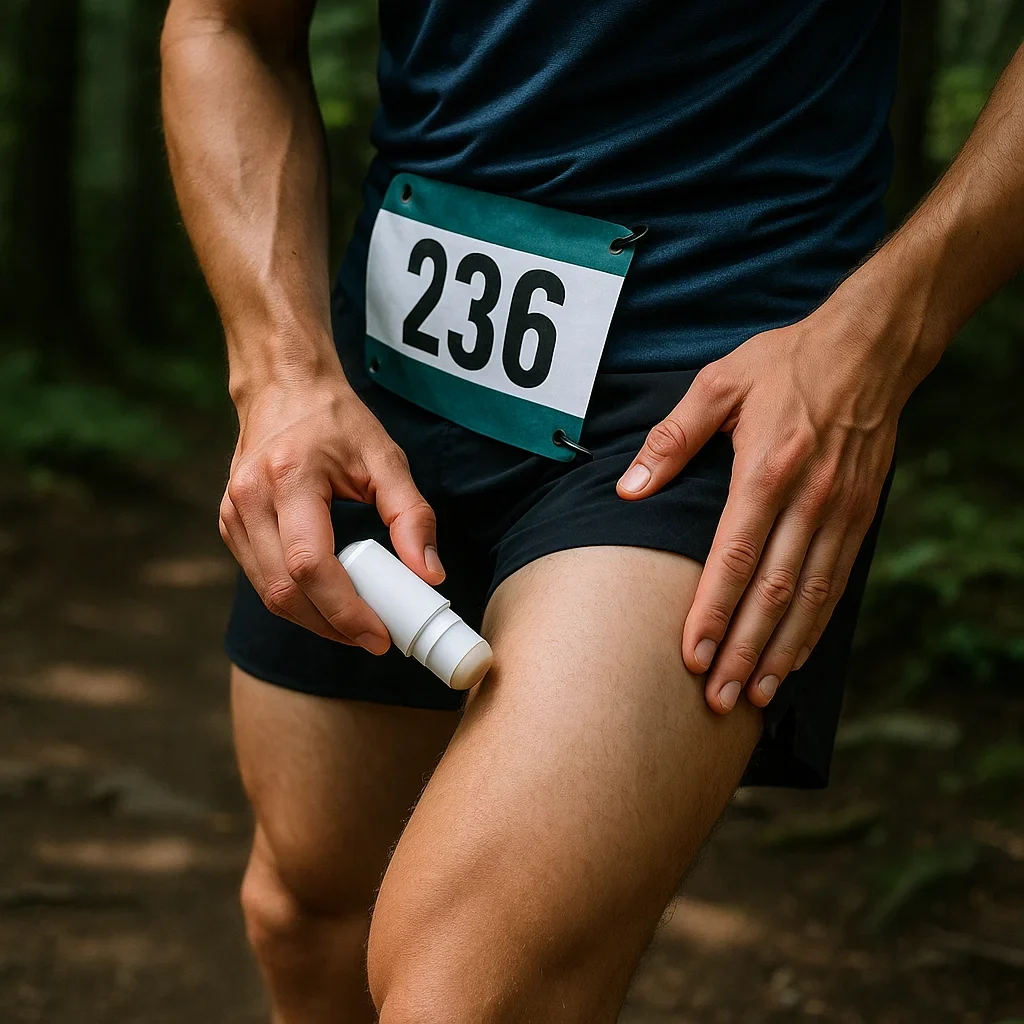🟢 Introduction
Chafing — it’s the silent killer of long runs. That burning, stinging sensation can turn a joyful trail into a painful shuffle. Whether you’re new to running or training for your next ultra, skin friction is one of the most common (and annoying) issues runners face.
But here’s the good news: chafing is highly preventable.
In this guide, you’ll learn why chafing happens, which areas are most affected, and — most importantly — how to stop it before it starts. From choosing the right clothing to using the best anti-chafe balms, you’ll run smoother and stay focused on your performance, not your discomfort.
🧪 1. What Causes Chafing in Runners?
Chafing happens when skin rubs against skin, clothing, or gear — especially when moisture and friction are involved. It creates red, irritated patches that can burn or even bleed. The longer the run, the worse it can get.
🧼 Common Chafing Triggers:
- Sweat: Salt crystals from evaporated sweat increase friction.
- Loose or rough clothing: Baggy shorts or poorly placed seams can rub constantly.
- Humidity: Moist skin is more vulnerable to abrasion.
- Repetitive motion: Long-distance runs or uphill/downhill terrain = more friction.
- Poor fabric choices: Cotton absorbs moisture and sticks to the skin.
“Chafing is like a blister, but it can happen anywhere clothing touches skin — and it doesn’t need shoes to strike.”
🔍 2. Most Affected Areas in Runners
While chafing can occur almost anywhere, some areas are particularly prone to friction in runners.
🔥 High-Risk Zones:
- Inner thighs: Classic zone, especially for shorts wearers.
- Underarms: Sleeveless tops or tank rubs.
- Nipples: Especially common in men; leads to “runner’s nipple.”
- Bra lines & straps: Sports bras that don’t fit well can wreak havoc.
- Waistbands: Especially if you’re carrying a belt or hydration pack.
- Feet: Technically blisters, but same friction mechanism.
Each of these zones can be protected with a combination of gear, products, and good habits — and that’s exactly what we’ll cover next.
🧢 3. How to Prevent Chafing: Gear, Clothing & Habits
The best way to treat chafing is to never let it happen in the first place. That means building smart habits and using gear that minimizes friction.
👕 Choose the Right Clothing
- Ditch cotton. It holds sweat and sticks to your skin.
- Go for synthetic, moisture-wicking fabrics like polyester, spandex, or technical merino wool.
- Tight-fitting is better than loose. Compression shorts under running shorts are a game-changer for inner thigh protection.
- Watch for seams. Flatlock seams reduce skin abrasion.
- In colder weather, wear thermal base layers — they reduce rubbing from jackets.
🧦 Socks & Shoes Matter
- Wear seamless, synthetic or wool-blend socks.
- Double-layer socks can reduce toe friction.
- Don’t ignore shoe tongues or collars — if they rub, tape or adjust.
🎒 Hydration Belts & Packs
- Ensure belts fit snug but not tight.
- Tape under the straps if they rub bare skin.
- Remove sand, salt, or dirt buildup from gear regularly.
“If your clothing moves independently from your body, it’s a potential chafe zone.”
🧴 4. Anti-Chafe Products That Actually Work
Balms, powders, and creams can act as a protective barrier, reducing friction even in the harshest conditions.
🔥 Top Anti-Chafe Solutions:
| Product | Best For | Notes |
|---|---|---|
| Body Glide | All-around protection | Easy stick format, sweat-resistant |
| Squirrel’s Nut Butter | Long runs & ultras | Natural ingredients, long-lasting |
| Vaseline (Petroleum Jelly) | Budget option | Messy but effective |
| Gold Bond Friction Defense | Daily training | Smooth feel, non-greasy |
| Zinc Oxide Creams | Humid or wet conditions | Healing + barrier protection |
✅ How to Apply:
- Rub directly onto clean, dry skin.
- Don’t forget edges (where clothing ends touch skin).
- Reapply mid-run for ultras or >2 hour sessions.
- Consider carrying a mini stick in your waistbelt.
Bonus tip: Combine balm + compression gear for near-complete protection.
🩹 5. How to Treat Chafed Skin After a Run
Sometimes, even with preparation, chafing happens. But don’t worry — you can heal quickly if you act fast and treat your skin with care.
🚿 Step-by-Step Healing Protocol:
- Clean the Area Gently
Use lukewarm water and a mild, fragrance-free cleanser. Avoid scrubbing. - Pat Dry — Don’t Rub
Use a soft towel and dab. Rubbing irritates damaged skin. - Apply Healing Ointments
Choose:- Zinc oxide cream (e.g. Desitin)
- Aquaphor or Vaseline
- Calendula balm for soothing
- Let It Breathe
If possible, avoid tight clothes and let the skin air out. - Avoid Re-Chafing
Take 1–2 days off if the area is bleeding or weeping. Switch to low-friction workouts like cycling or swimming temporarily.
⚠️ If the skin becomes swollen, red with streaks, or painful to the touch — it may be infected. See a doctor promptly.
✅ Final Thoughts
Chafing might seem like a minor issue, but for runners, it’s often the difference between finishing strong and limping home. With the right gear, products, and habits, you can prevent it almost entirely.
So next time you gear up for a run, give your skin the same attention you give your shoes or your watch. A little prevention goes a long way — and your thighs will thank you.
❓ Frequently Asked Questions
🔥 What causes chafing when I run?
🧴 Should I use balm even on short runs?
👕 What should I wear to avoid chafing?
💊 What’s the best way to heal chafed skin?
⛔ When should I stop running because of chafing?
🧦 Do socks matter for preventing chafing?
🏃 Does body shape or size affect chafing?
🧪 Are powders better than balms?
🎒 Can hydration packs cause chafing?
🩹 How long does it take for chafed skin to heal?
📚 Further Reading
🔗 Related Articles from Our Blog
Complete guide on hydration, recovery, and sun protection.
How to cleanse, moisturize, and repair your skin after running.
Causes, solutions, and hydration tips for flaky skin.
🌐 External Resources
🧠 Quick Quiz: Are You Chafe-Proof?
- What fabric should runners avoid to prevent chafing?
- True or False: Loose clothing reduces friction while running.
- What is a popular anti-chafe product among long-distance runners?
- How often should you reapply anti-chafe balm during an ultra race?
- What is the best post-run treatment for irritated skin?
✅ Quiz Answers
- 1. Cotton
- 2. False — tight, moisture-wicking gear is better
- 3. Body Glide or Squirrel’s Nut Butter
- 4. Every 2–3 hours or as needed
- 5. Clean gently, apply zinc oxide or petroleum-based ointment, let skin breathe
🔗 Share this guide with your running crew

About the Author
Lost Pace is an ultramarathon runner, shoe-tester and the founder of umit.net. Based year-round in Türkiye’s rugged Kaçkar Mountains, he has logged 10,000 + km of technical trail running and completed multiple 50 K–100 K ultras.
Blending mountain grit with data, Lost analyses power (CP 300 W), HRV and nutrition to craft evidence-backed training plans. He has co-written 260 + long-form guides on footwear science, recovery and endurance nutrition, and is a regular beta-tester of AI-driven coaching tools.
When he isn’t chasing PRs or testing midsoles, you’ll find him sharing peer-reviewed research in plain English to help runners train smarter, stay healthier and finish stronger.
Ultrarunner · Data geek · Vegan athlete

